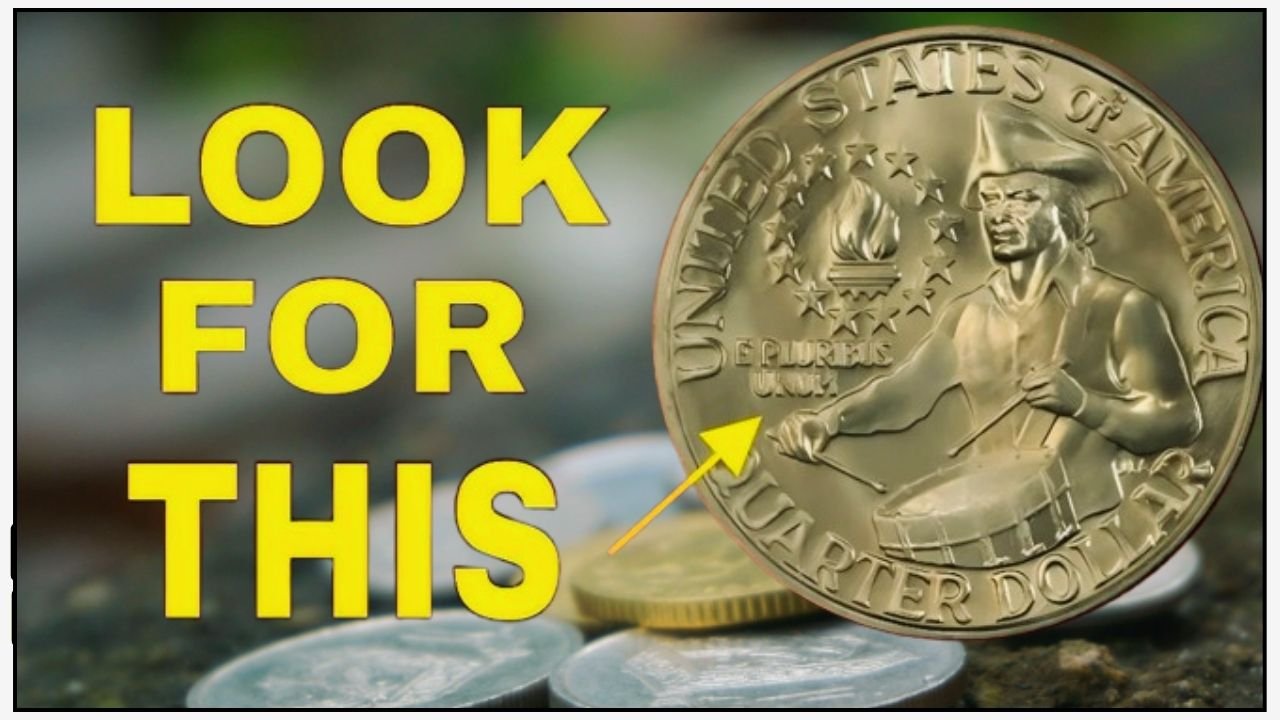Bicentennial Quarter: In 1976, the United States celebrated its 200th birthday with a big party, and the U.S. Mint joined in by creating special coins called Bicentennial Quarters. These quarters look different from regular ones, with a colonial drummer on the back and the dates “1776–1976” on the front. Most of these coins are worth just 25 cents, but there’s a rumor that one super rare version could be worth an incredible $2.5 billion—and it might still be hiding in your pocket change! This story has coin collectors and everyday people buzzing with excitement, but is it true? Let’s dive into the facts and find out what makes this quarter so special.
A Coin with a Unique Design
The Bicentennial Quarter was made to honor America’s 200 years of independence. Instead of the usual eagle on the back, it shows a drummer boy, a torch, and 13 stars for the original colonies. The front still has George Washington’s face, but it’s marked with the double date “1776–1976.” The U.S. Mint made over 1.6 billion of these quarters in 1975 and 1976, so they’re easy to find in change jars or cash registers. Most are made of copper and nickel, but some special ones, sold in collector sets, are 40% silver and worth a few dollars. So why is one supposedly worth billions?
The $2.5 Billion Mystery | Bicentennial Quarter
The idea of a $2.5 billion Bicentennial Quarter sounds like something from a movie, but the story comes from numismatic lore—stories passed around by coin collectors. Some believe this rare quarter was a mistake, maybe struck on a gold or high-purity silver planchet (the blank metal disk used to make coins) instead of the usual copper-nickel mix. Others think it could be a prototype coin, never meant to be released, or one with a unique error like double stamping or an off-center design. No one has found this exact coin yet, and there’s no proof it was ever sold for billions, but the rumor keeps people searching.
Why So Valuable?
What could make a single quarter worth more than some private islands? Experts say it’s all about rarity and demand. Here’s what might make this coin special:
- Unique Material: It could be made of gold or pure silver, unlike regular quarters.
- Minting Error: Mistakes like double stamping or wrong planchets make coins one-of-a-kind.
- Prototype Status: It might be a test coin accidentally released into circulation.
- Perfect Condition: A coin in pristine shape (graded MS-67 or higher) is worth more.
- Collector Craze: If collectors believe it’s unique, they might pay a fortune for it.
Even though no quarter has ever sold for $2.5 billion, rare Bicentennial Quarters with errors or silver content have fetched hundreds or thousands at auctions. For example, a 1976-S Silver Proof Quarter sold for $19,200 because of its high grade and rarity.
Could It Really Be in Circulation?
Surprisingly, yes! Over 1.6 billion Bicentennial Quarters were made, and many are still used as regular money. While the $2.5 billion coin is likely a myth, valuable versions—like those with errors or silver content—could still be out there in coin jars, vending machines, or your wallet. During coin shortages or when old collections are spent, rare coins sometimes pop up in everyday change. The odds of finding a billion-dollar quarter are tiny, but checking your change could still pay off.
How to Spot a Rare Quarter
Want to join the treasure hunt? Here’s a quick guide to check if your Bicentennial Quarter is special:
|
Feature |
What to Look For |
|---|---|
|
Date |
Must show “1776–1976” |
|
Design |
Colonial drummer on the back |
|
Mint Mark |
“S” (San Francisco) may indicate silver or proof |
|
Edge |
Silver edge (no copper stripe) for silver coins |
|
Weight |
Silver quarters weigh ~5.75g; regular ~5.67g |
|
Errors |
Look for double letters or off-center designs |
Use a magnifying glass to check for errors and a small scale to weigh the coin. If you think you’ve got something special, take it to a coin expert or grading service like PCGS or NGC.
The Thrill of the Hunt
The story of a $2.5 billion Bicentennial Quarter might be more legend than fact, but it’s sparked a new wave of interest in coin collecting across the U.S. People are digging through their change, hoping to find a hidden gem. Even if the billion-dollar coin is a myth, some Bicentennial Quarters are worth hundreds or thousands, especially those in great condition or with rare errors. So next time you get a quarter in change, take a closer look—it might not be worth billions, but it could still be a small piece of American history with a big payoff.
